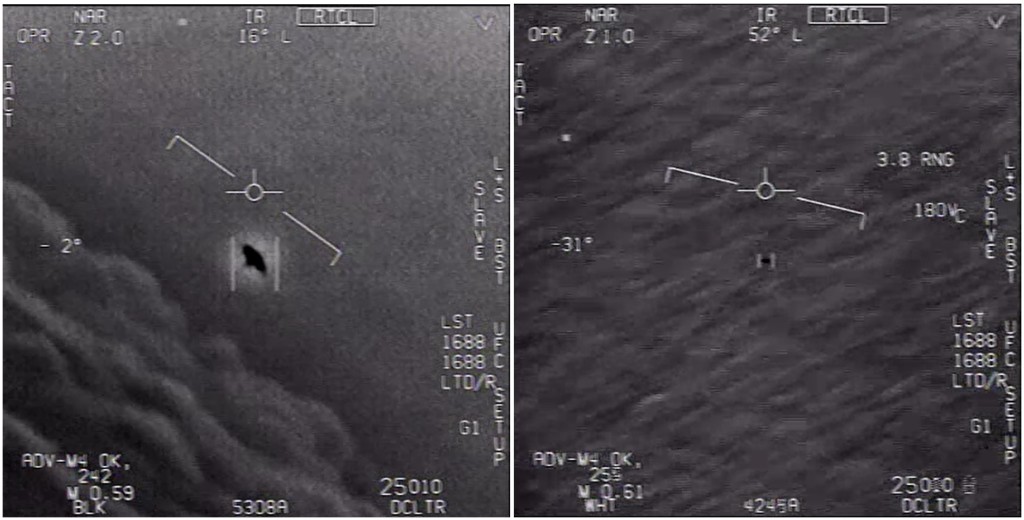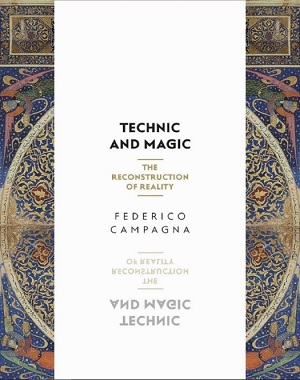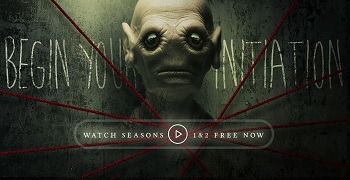The Unbinding (Pfeiffer 2023) is a new documentary from the same team that brought us Hellier (Pfeiffer 2019). Because it’s so new, I shall avoid any spoilers in what follows.

It concerns a weird-looking artefact that winds up in the possession of Greg and Dana Newkirk after its original discoverers undergo disturbing experiences and pass it to the Newkirks in desperation. Strange happenings then commence in the Newkirks’ home, so they begin a thorough magickal investigation. The story unfolds with all the narrative skill and high production values that fans of Hellier will be hoping for. In the film’s surprising conclusion, the nature of the artefact proves to be something that most viewers will never suspect.
From a magickal perspective The Unbinding raises some interesting questions: why would an entity of this nature behave like that; and is it significant that its story is being told at this historical moment? These questions are not explored in the film, and it still feels too soon for me to tackle them here, but what moved me to comment is a particular sequence that presents some difficulties concerning the ethics of occult content creation.
Of course, I create occult content too, and I’m ever conscious of the potential conflict between promotion of magickal or spiritual development and accumulation of an audience or revenue. I aim to produce content that’s clearly in the service of the former, but it’s not always an easy call.
Listeners to WORP FM will have noticed our spasmodic recording schedule – algorithmic suicide, no doubt. Alan and I agree to make an episode far more often than we actually do. We make firm plans to talk about a topic but usually we decide that it isn’t really worthwhile. We’ll address something only when it seems to make a clear and constructive difference. If that sounds sanctimonious, so be it, but stating our conscious motive helps us try to live up to it, at least.
Magickal investigation in The Unbinding leads the participants to decide they must give up possession of the artefact. The Newkirks own and run a travelling museum of haunted objects; if they surrender the artefact it will no longer feature in the museum. They decide, as an experiment, to make a 3D digital scan of the artefact from which they can print a replica. Their stated aim is to explore whether a 3D print of a haunted object might also produce paranormal effects. Presumably, the replica will also fill the gap in the museum left by the original.
The sequence of the film in question was originally streamed live to internet followers. Whilst the artefact is being digitally scanned, questions are addressed to the spirit associated with it, and answers are obtained via a medium (who is wearing a blindfold and noise-cancelling headphones) using the Estes method.
The two operators begin by explaining their intentions to the spirit, but the medium’s responses immediately convey the spirit’s clear and fearful misgivings:
OPERATOR: A camera is going to send out little beams of light that are going to bounce off the artefact that you inhabit.
MEDIUM: Choking.
OPERATOR: It’s not going to hurt you. It’s not going to choke you.
MEDIUM: It is.
OPERATOR: It’s not going to hurt you, I promise […]
MEDIUM: Hurt.
OPERATOR: I promise, it’s not going to. (Pfeiffer 2023: 41’47”)
The scanning of the artefact begins and the medium reports sharp pains at specific points in her body. In an intercut sequence from a later interview, she states that never before had she experienced physical pain whilst using the Estes method.
The scanning process continues.
MEDIUM: Don’t… make that.
OPERATOR: I have to. You don’t want us to print you?
MEDIUM: No. No.
OPERATOR: It’s almost done, sweetheart. (Pfeiffer 2023: 42’53”)
When a further scan is made the medium again reports physical pain.
The curious thing about this scene is that although the operators are palpably concerned for the spirit when (later) it seems it is being coerced and controlled by another entity, they seem oblivious to the possibility of distress caused by their own actions. Clearly, the spirit does not want the artefact to be scanned, and the reports from the medium suggest this is a cause of pain to the medium and/or the entity.
Rather than what the spirit says to them, the operators seem more impressed by the relevance and timing of the medium’s responses, as if dispelling doubt over the method or the veracity of the entity were a greater concern to them than the very clear request for them to stop. Possible reasons for that request are not explored either.
This scene impressed on me how even those of us who wholly accept the paranormal and magick are still vulnerable to slipping into materialistic thinking. Presumably unconsciously, the desire to obtain a replica of the artefact and to demonstrate the veracity of the method perhaps took precedence over understanding and responding to the communications as interactions with an actual presence.
Artefacts and methods that produce reliable effects are excellent resources for generating interesting content, but if the spirit’s “Don’t… make that” is to be heard and not drowned out, a magical perspective is required.
References
Pfeiffer, Karl, director (2019). Hellier. Planet Weird.
Pfeiffer, Karl, director (2023). The Unbinding. Planet Weird.




